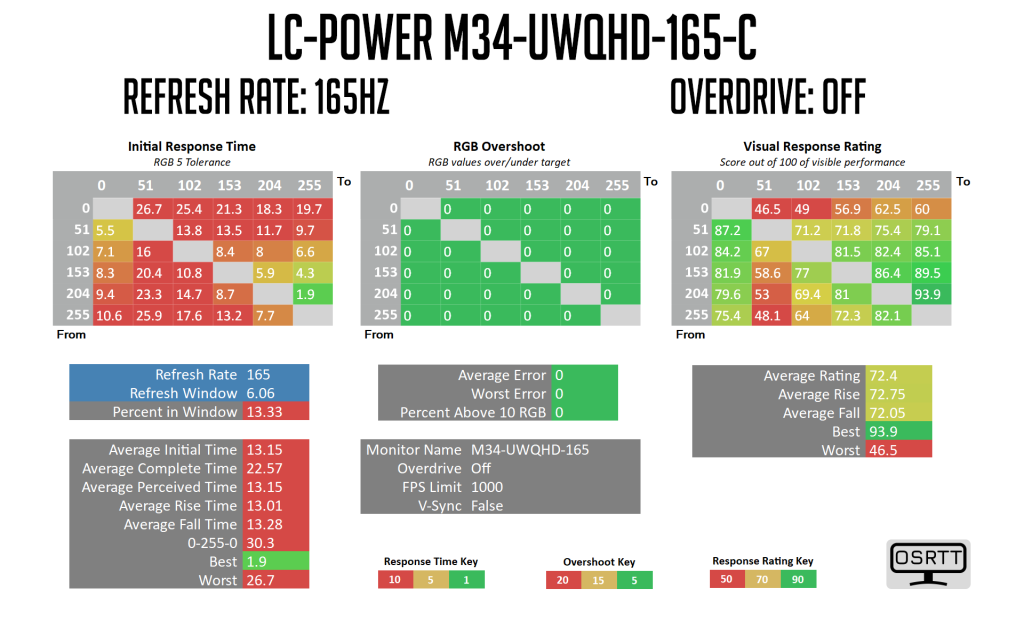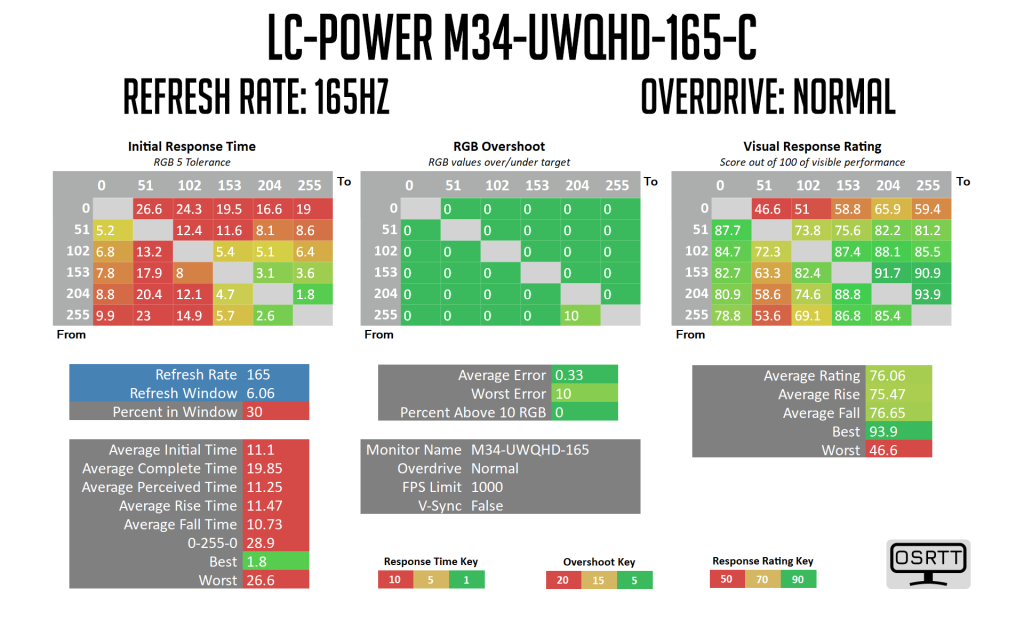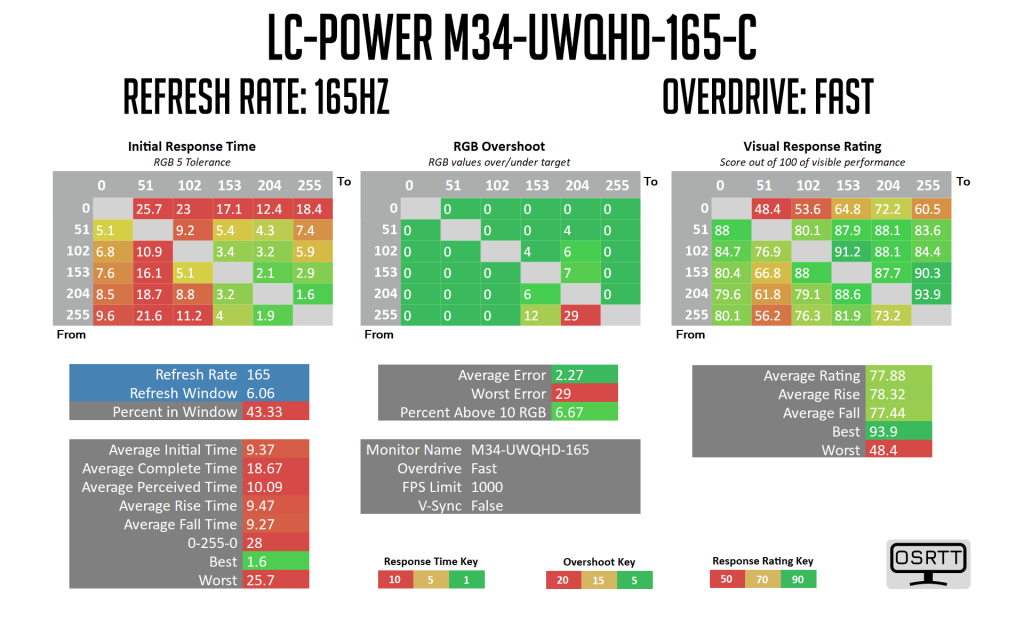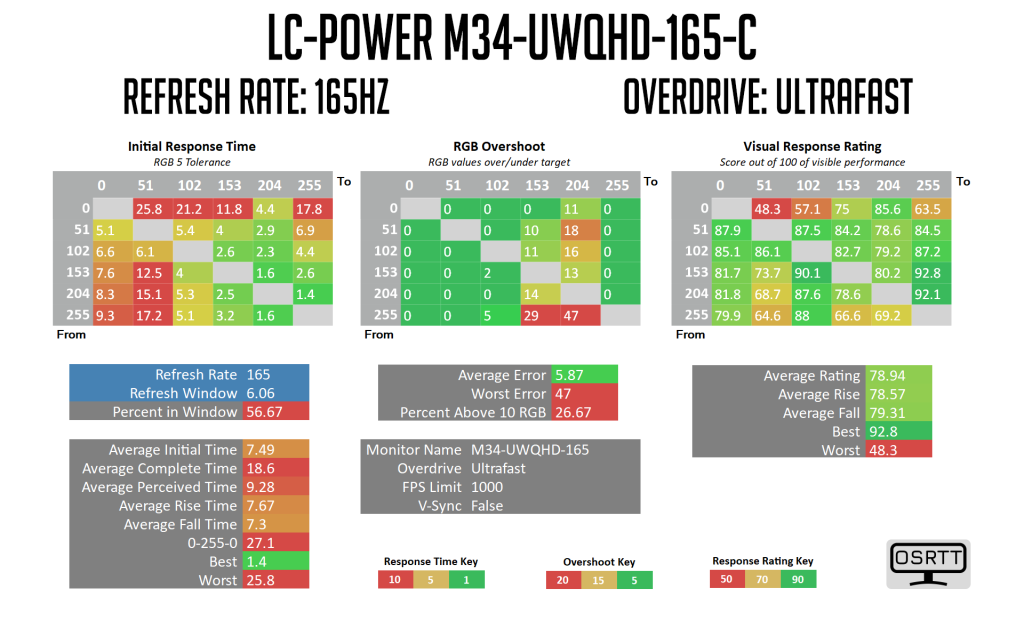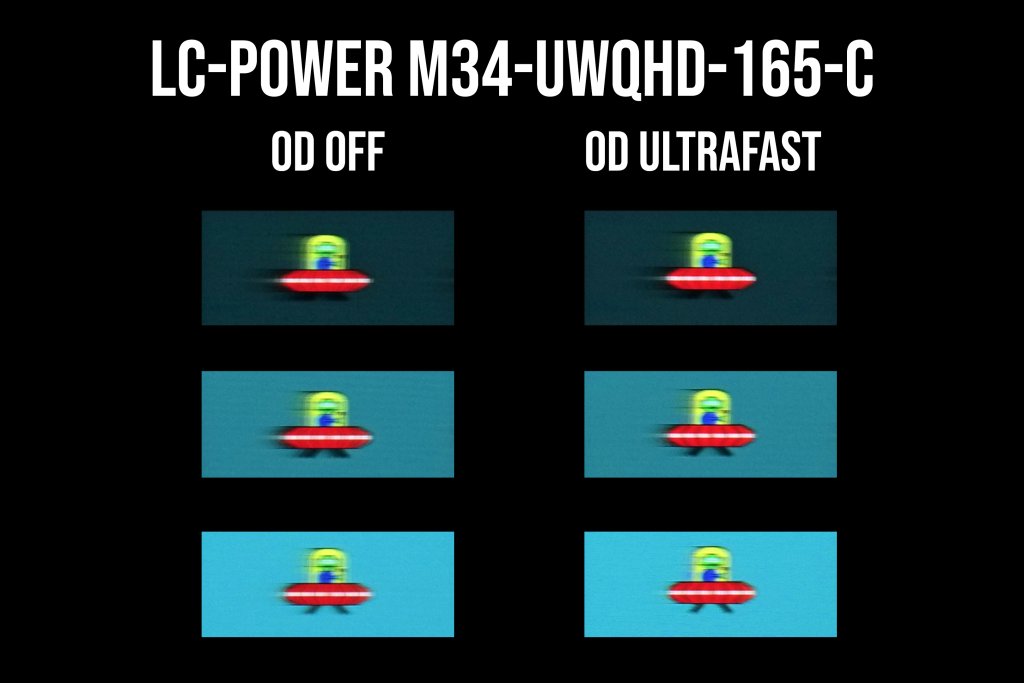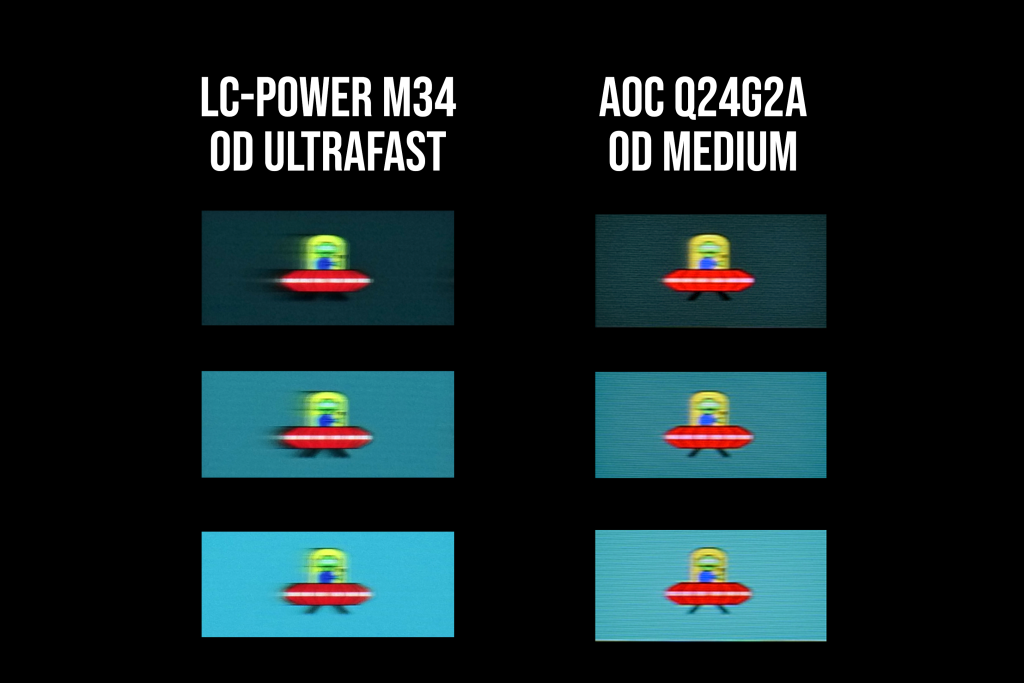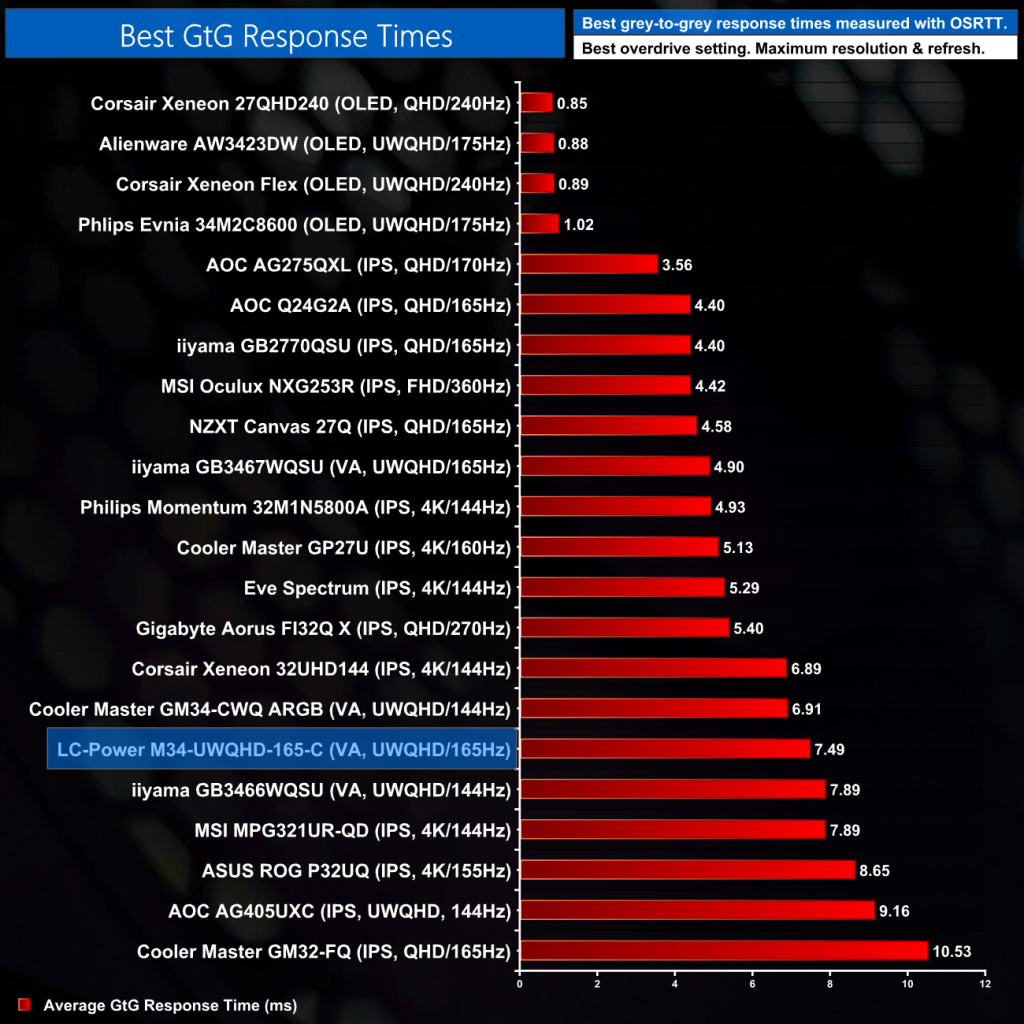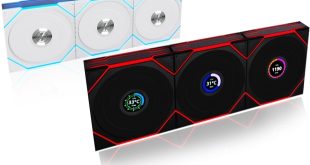Monitor response time testing is a new addition to our reviews, where we use the Open Source Response Time Tool (OSRTT), developed by TechTeamGB. This measures grey-to-grey response times and presents the results in a series of heatmaps, the style of which you may be familiar with from other reviews.
Initial Response Time is the time taken for the panel to transition from one colour to another, where lower values are better. We present the initial response time, so overshoot is not taken into account and is measured separately. We use a fixed RGB 5 tolerance for each transition.
Overshoot is the term given for when a monitor's transition exceeds or goes beyond its target value. So if a monitor was meant to transition from RGB 0 to RGB 55, but it hits RGB 60 before settling back down at RGB 55, that is overshoot. This is presented as RGB values in the heatmaps – i.e. how many RGB values past the intended target were measured.
Visual Response Rating is a metric designed to ‘score' a panel's visual performance, incorporating both response times and overdrive. Fast response times with little to no overshoot will score well, while slow response times or those with significant overshoot will score poorly.
We test the M34-UWQHD-165-C at 165Hz, using all four of the overdrive settings found within the OSD.
Response time testing is all too easy to summarise – we can skip over the results with OD off and set to Normal as the screen is far too slow. Even using the Fast mode we're only looking at an average response time of 9.37ms, with some particularly slow rise times from black and grey shades.
The best mode is the Ultrafast option, which manages an average of 7.49ms, but with a number of transitions still exhibiting response times well over the 6.06ms 165Hz refresh rate window, leaving us with just 57% of transitions coming within that window. The dark-level smearing is a particular problem here, as it unfortunately is known to be for cheaper VA screens.
For a visual representation, we can see even using the Ultrafast OD mode, there is a significant amount of trailing and smearing of the image, particularly of darker shades in the top two images – in the bottom image with the light cyan background, this is less noticeable.
Comparing performance to the AOC Q24G2A which retails for less than £230, motion clarity is noticeably worse on the M34 and leaves a fair bit to be desired.
This leads us to a situation where the average response time doesn't tell the whole story, as a number of slower transitions effect things noticeably.
 KitGuru KitGuru.net – Tech News | Hardware News | Hardware Reviews | IOS | Mobile | Gaming | Graphics Cards
KitGuru KitGuru.net – Tech News | Hardware News | Hardware Reviews | IOS | Mobile | Gaming | Graphics Cards


